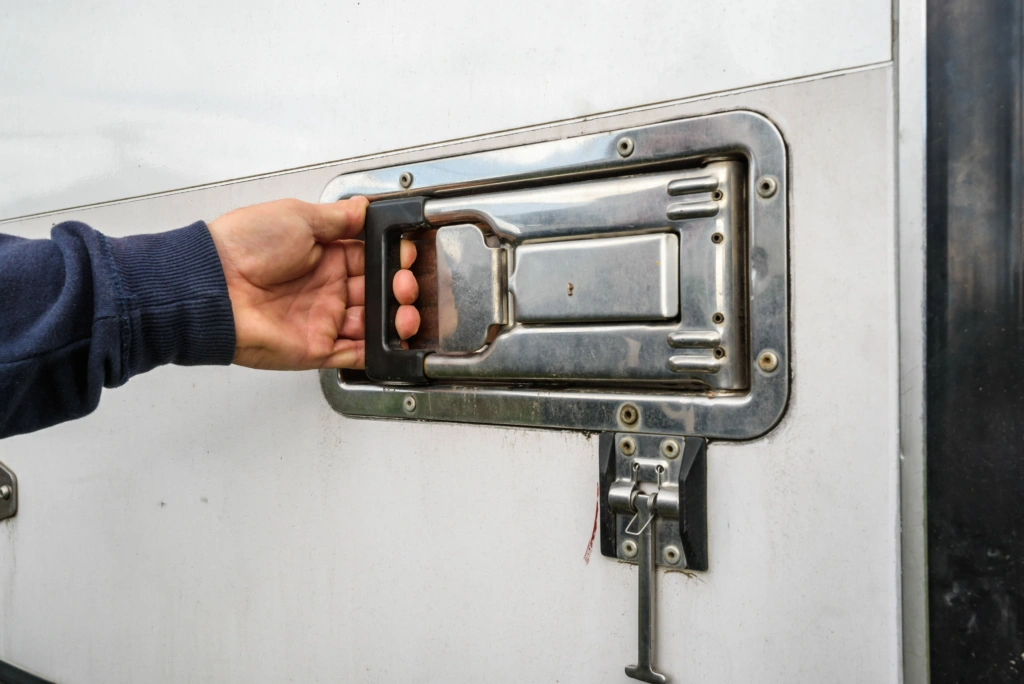It should not be a surprise to anyone reading this that freight fraud is no longer a fringe problem—it’s a growing crisis impacting shippers, brokers, and logistics providers across North America. In a recent joint webinar Danielle Spinelli, Account Executive, Descartes and Ken Riddle, Director for the Office of Registration Federal Motor Carrier Safety Administration (FMCSA) discussed how the agency is modernizing systems and stepping up enforcement. New oversight measures are being implemented, and the FMCSA is sharing steps the industry can take today to protect itself. This article provides a summary of their conversation. You can watch the entire webinar here.
The State of Freight Fraud
The FMCSA is treating freight fraud as a top priority that impacts transportation safety and supply chain reliability. From double brokering schemes to false carrier identities and cargo theft, the agency made it clear: the volume and sophistication of fraudulent activity has reached unprecedented levels.
The FMCSA has responded by launching Identity Verification for new USDOT applicants in the Unified Registration System (URS). With plans to roll out identity verification for existing users in a new registration system later in 2025. “Bottom line is, we’re protecting the front door right now,” Ken Riddle said, “and it’s doing a good job of that… but what we need to do now that we’re protecting the front door is go in and clean the inside of the house. And that will come with the new registration system.”
Identity Verification during FMCSA Registration; How it works?
New applicants for a USDOT are required to:
- Use a personal/mobile device to submit a government-issued identity card, driver’s license, passport, or resident card
- Use a personal/mobile device for facial recognition verification Enforcement and Investigations
- Note that an employee/owner for the company applying for the USDOT must start the registration process, and only after the identity verification process, can the remaining registration steps be performed by a 3rd party, like a blanket process agent
What is the identity verification process?
- FMCSA is working with IDEMIA to perform the identity verification process (IDEMIA is the same solution used by the Transportation Security Administration (TSA)
- The application process within the URS will route new applicants to the IDEMIA website to scan credentials (driver’s license, passport, etc.) along with their face (not a picture, but a live scan of their face) before allowing them to continue the new application process
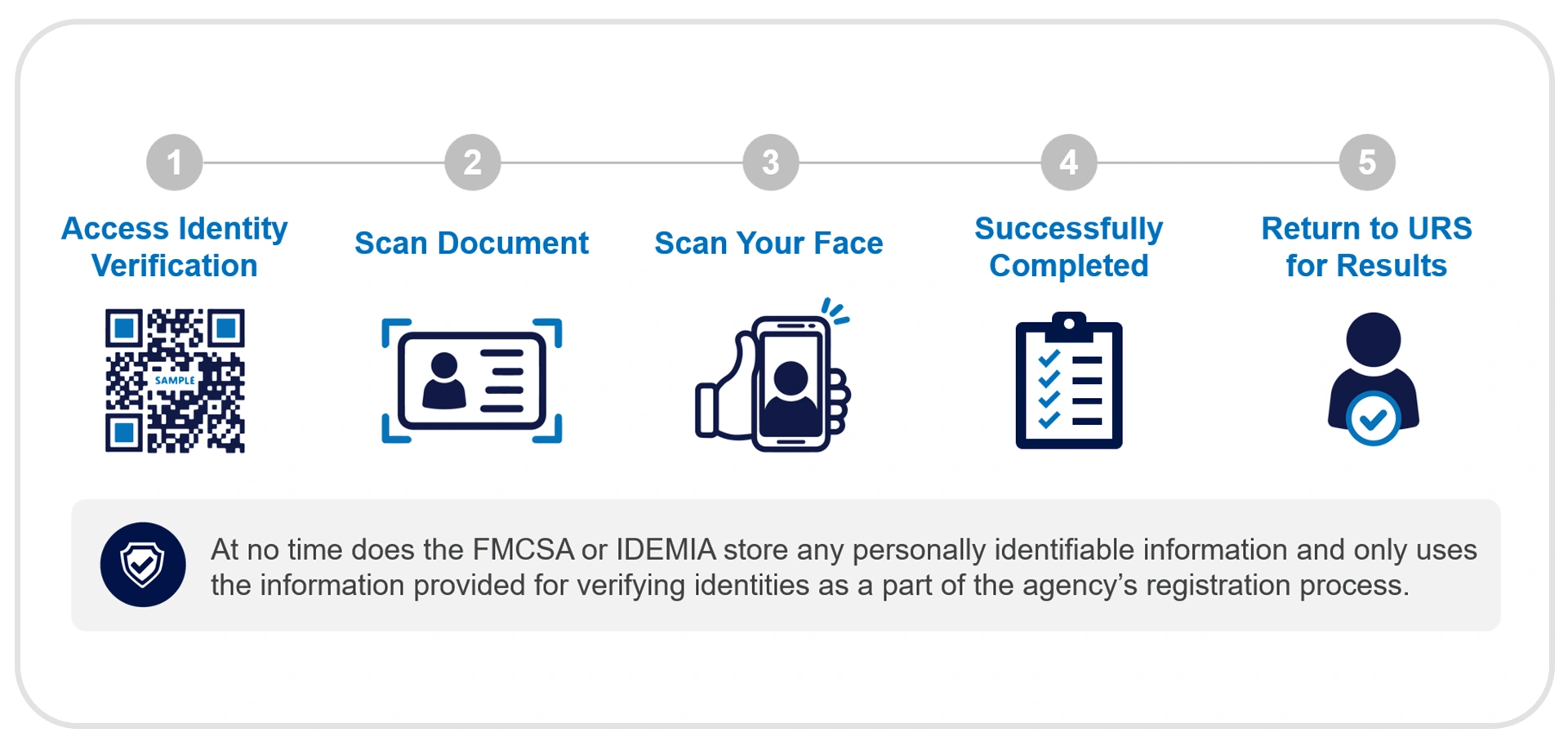
Things to know
All users assigned to a new account in the FMCSA system will go through the identity verification process
Identity Verification; Stats so far
From April 7, 2025 through June 30, 2025, FMCSA had over 38,000 unique applicants in the URS. Out of those, 88% of unique users passed the identity verification without issue, 7% failed, and 5% were ghost applicants (abandoned the process; includes bot attempts).
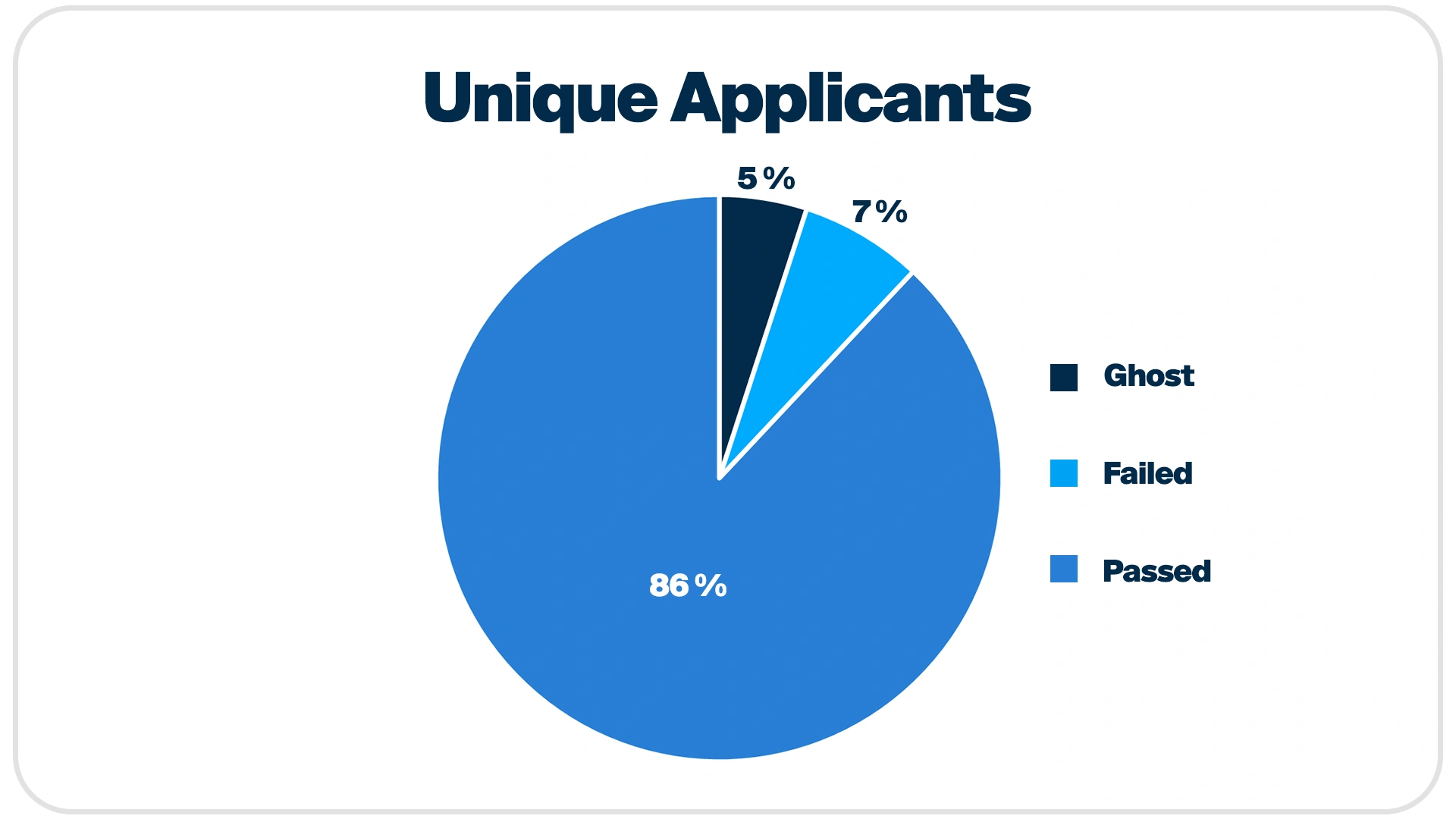
Failed Identity Verification; What do you do?
The FMCSA set up a Contact Center to help customers that need assistance with identity verification. If you fail the ID verification process, there will be an error code provided by the system. Users call the contact center and provide the error code, and the representatives will help the user to pass the verification process. Typical reasons for failing include expired credentials or poor lighting during the facial scanning process. Additionally, the FMCSA has improved virtual address recognition (and continues to improve that capability) to stop applicants from using PO Boxes or a UPS Store as their principal place of business which can cause an application to fail.
In recent months, the contact center was able to get 67% of those failed applicants to pass the identity verification process. The remaining 1/3 that could not be helped were referred to IDEMIA enrollment centers for more assistance with scanning documents and facial recognition. To date FMCSA has contracted with 300 IDEMIA enrollment centers to assist with the process, with 131 live right now and expanding.
If an applicant still fails identity verification after contacting IDEMIA they can visit a FMCSA office and get manually verified. “Bottom line is we’re not going to let somebody just not be able to get through the identity verification process when they are in fact a legitimate individual with valid credentials.” said Riddle. “But there’s a lot that shouldn’t get through, and they don’t get through, and that’s the good news.”
For more information on identity verification (Video Tutorial, Fact Sheet, Frequently Asked Questions) visit FMCSA online at; https://www.fmcsa.dot.gov/registration/identity-verification.
What is the new system?
Some of the current registration systems are 30 years old, are not very user-friendly, and need to be made more secure. These systems include:
- Portal for authentication and authorization
- URS (Unified Registration System) for registration
- Licensing & Insurance Database (L&I) and Motor Carrier Management Information System (MCMIS) for lifecycle management
- DataQs for event handling
These systems are being updated into a new intuitive/user-friendly modern system called MOTUS (Latin for motion). The new system will replace all the old systems when fully live.
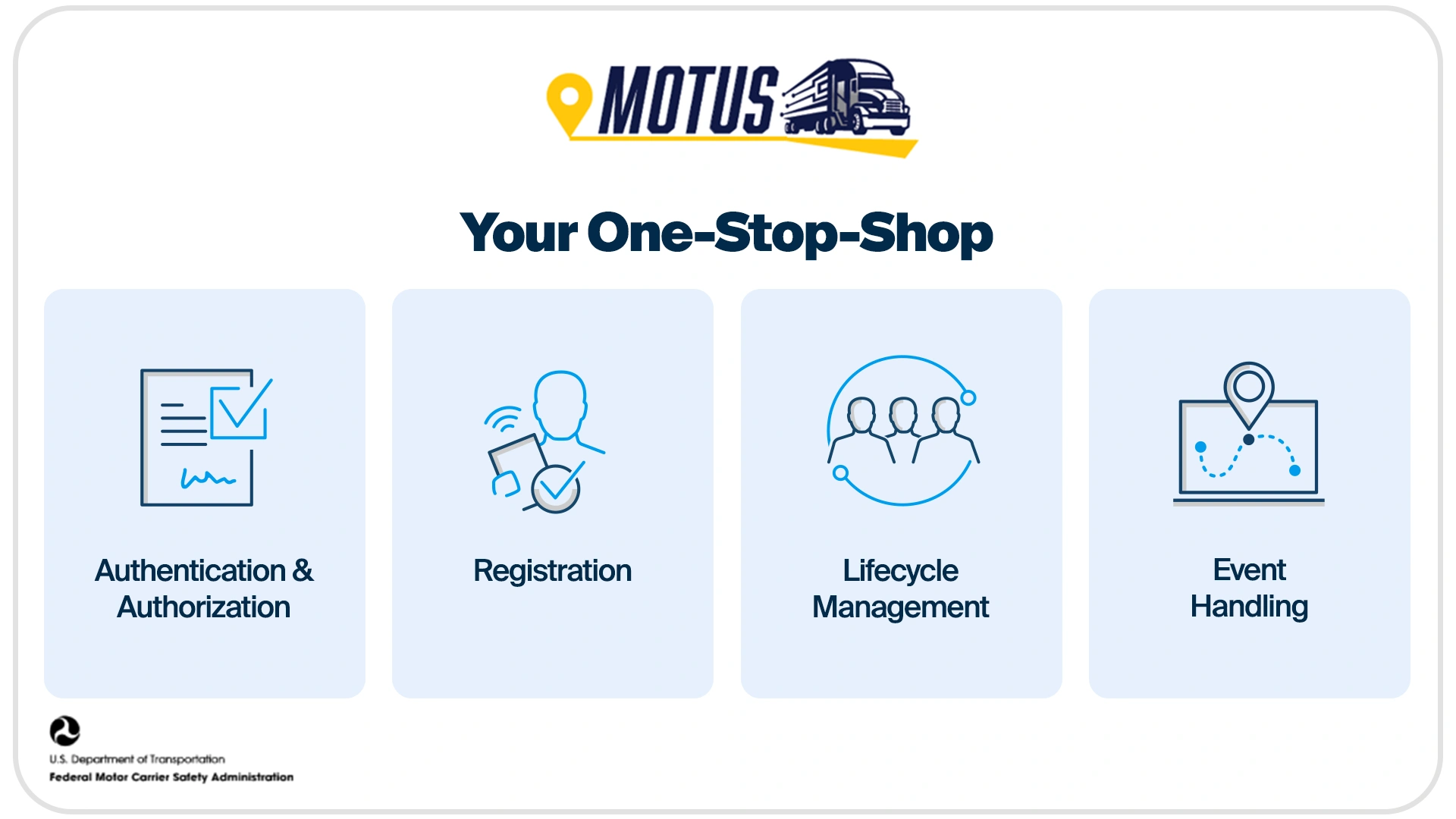
The new MOTUS system is being rolled out in phases.
Phase 1 – Supporting Companies
Transportation service providers, blanket process agent companies, and financial responsibility filers (insurance, bonds, etc.) will have limited early access to the system. These companies typically assist carriers with FMCSA registration and therefore need to be onboard first.
Phase 2 – Launch All Users
All customers will be able to access the system and take advantage of enhanced, user-friendly registration tools and information. New applicants and existing account holders will need to go through the verification process. There is no formal date for this phase, but Riddle noted it would be nice if it happened in 2025.
Phase 3 – Feedback and Continuous Improvement
Phased rollout of the new system will continue with additional functionalities coming in future releases. In the new system every user will have an account, which is different than today. Additionally, users will manage their own account, FMCSA will not manage accounts. Users can add/remove people on accounts see activity on the account, etc.
What is NOT happening when MOTUS launches its first release?
- Motor Carrier/Freight Forwarder (MC/FF) Docket numbers will not be eliminated
- Safety Registration will not be implemented
- There will be no changes to the BOC-3 filing process
These changes may be implemented in a later release, but the FMCSA heard feedback from the industry that there would be too many changes at once if these went into effect in conjunction with the new system launch. Having said that, if you’re a company relying on MC numbers you probably want to start thinking about transitioning to the USDOT numbers as MC numbers will likely be phased out at some point.
Will this stop all fraud?
“Thieves are smart… they’re always one step ahead of us and all other fraud prevention companies. And we’re going to work our darndest to try and stay ahead of them.”, Riddle said. These updates will not stop all scams but according to Riddle the new system will stop a majority of scam attempts and will make it harder for bad actors from outside North America to get into FMCSA accounts and appear to be legitimate carriers.
Looking Ahead
FMCSA’s message to the industry was clear: enforcement is increasing, but so is the opportunity to collaborate and innovate. As the systems come on-line and are improved upon, Riddle expects more data sharing to occur across agencies. For example, FMCSA in the future may include power unit registration data from Departments of Motor Vehicles to validate fleet sizes when companies register or update their FMCSA profiles.
Actionable Recommendations for Transportation Teams
Along with the added protection FMCSA is adding to their systems, here are five fraud prevention best practices to start implementing today:
- Layer Visibility into Carrier Vetting
- Use platforms like Descartes MyCarrierPortal™️ that combine FMCSA authority data with historical tracking performance, vehicle identification number (VIN) verification with geo-location, and insurance validation at the point of onboarding—not just post-dispatch.
- Train Ops Teams to Recognize Red Flags
- Empower dispatchers and carrier reps to spot unusual tracking patterns, identity mismatches, FMCSA profile edits, or voice-over internet protocol (VoIP)-based driver phones that could be linked to fraudulent entities.
- Automate Your Fraud Response
- Establish real-time alerting workflows for route deviations, location ping gaps, or sudden contact changes—and ensure your team knows how to respond.
- Use Risk Scoring in Load Assignment
- Don’t just rely on past relationships. Implement fraud and performance scores like those from Descartes MyCarrierPortal into your tendering process to avoid high-risk carriers before a load is booked.
- Engage with FMCSA Tools and Reporting
- Leverage FMCSA’s updated registration and complaint portals to verify credentials and report suspicious behavior. The more the industry collaborates, the stronger the shield.
Want to learn how Descartes is helping customers proactively stop fraud? Schedule a demo or contact us to learn more about Descartes driven fraud prevention capabilities.
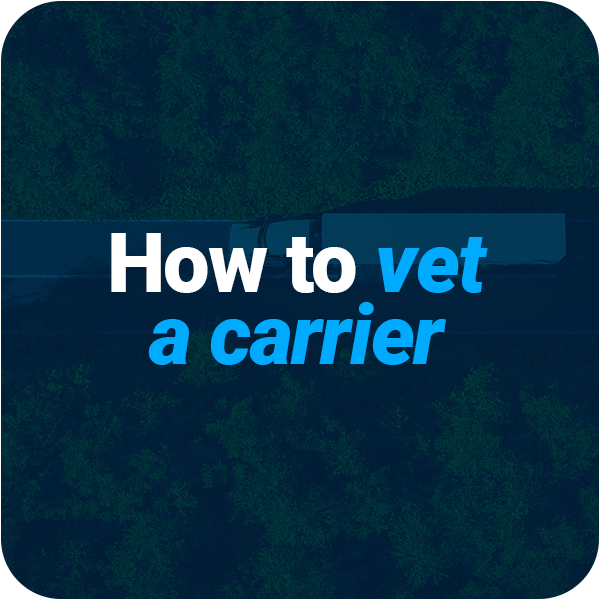
Download our Carrier Vetting Checklist
Get your guide to verify carrier identities & prevent fraud in your network


